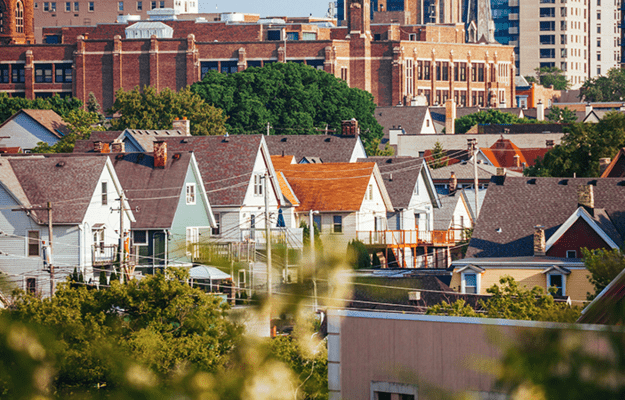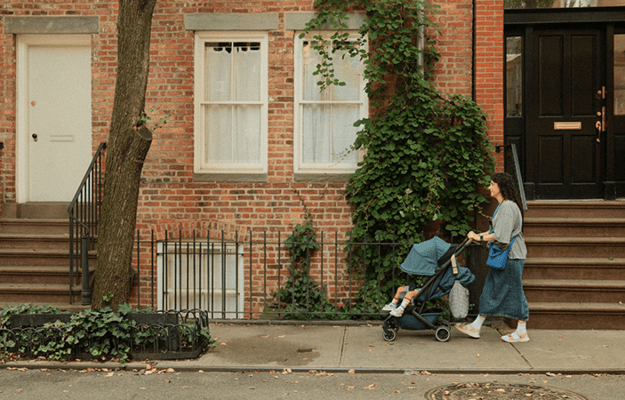
( ImYanis / Shutterstock)
Plan Smart Cities with, Not for, Communities
- Title:
-
Toward Engaged, Equitable, and Smart Communities: Lessons From West Baltimore
- Author:
-
Willow Lung-Amam, Ariel H. Bierbaum, Sheri Parks, Gerrit-Jan Knaap, Gail Sunderman, Lauren Stamm
- Source:
- Publication Date:
-
2019
In the 21st century, cities are reckoning with a new class of infrastructure: smart city technologies like free public Wi-Fi, web-based curricula, and smart transit hubs. Distributing these services requires the same amount of deliberation as physical infrastructure like road and bridges. Adopting these new technologies could exacerbate the digital divide and income disparities across communities. But if cities implement them equitably, smart city technologies can spur economic development, improve educational outcomes, increase transit efficiency, and increase social services access.
Cities rarely give sufficient attention to the potentially inequitable costs and benefits of smart infrastructure, particularly for low-income communities of color. Even when citizens are engaged in planning, cities often default to solutions that benefit private tech companies rather than residents. In this study of smart city technology in West Baltimore, researchers from the University of Maryland, College Park, explore how engaging communities most affected by smart city investments can help close, rather than exacerbate, opportunity gaps between neighborhoods.
The researchers conducted focus groups in two West Baltimore neighborhoods, Upton and Druid Heights, where 92.0 percent of residents are Black, 15.4 percent of people older than 25 have a bachelor’s degree, and more than 50.0 percent of residents have incomes below 150 percent of the federal poverty level. The researchers partnered with two of the largest community-based organizations in West Baltimore, Upton Planning Committee and Druid Heights Community Development Corporation, to recruit and coordinate the focus groups. The first round of focus groups identified participants’ neighborhood concerns, technology access and barriers, and ideas about how to address neighborhood challenges with technology. The second round of focus groups gathered feedback from residents on specific smart city investments, including those already underway and those on the horizon.
Through 10 focus groups with 172 participants and 116 technology use and access surveys, this study showed how smart city technologies can help residents navigate uneven resource distribution, address the existing digital divide, and develop plans that leverage creative problem-solving to address critical community needs and priorities.
Key findings
- Many participants lack reliable computer access—68 percent of participants rely on cell phones for internet access, and 24 percent said their internet connection was slow or unreliable.
- Participants expressed concerns that internet disparities could hold West Baltimore back as technology advances across the city.
- When discussing smart city solutions, many residents said the process of working with the community was just as important to them as the outcome of the planning process.
- Participants noted that the construction and maintenance of smart technology could provide West Baltimore residents with needed employment and technology training.
- Participants voiced concerns that existing and upcoming neighborhood technologies, such as blue light cameras and gunshot detectors, could lead to oversurveillance and racial profiling.
- Many participants expressed a need to access data from surveillance technology, specifically to allow the community to better track its own safety conditions and hold police accountable.
Policy implications
- Planning with, not for, communities can help repair and build trust critical to the success of smart city interventions. Researchers, government agents, and smart city technologists should cede power to community leaders and build reciprocal relationships.
- Smart city policies, programs, and plans should leverage existing neighborhood assets, facilitate residents’ access and choice, and acknowledge the diversity within and between neighborhoods.
- Smart city planning and implementation should incorporate community accountability and engagement. Notably, communities need to own new technology and have full data access so they can determine how new technology and information is applied.
- As cities invest in smart technologies, they should also invest in closing digital divides and solutions that complement the ways communities already use technology.


